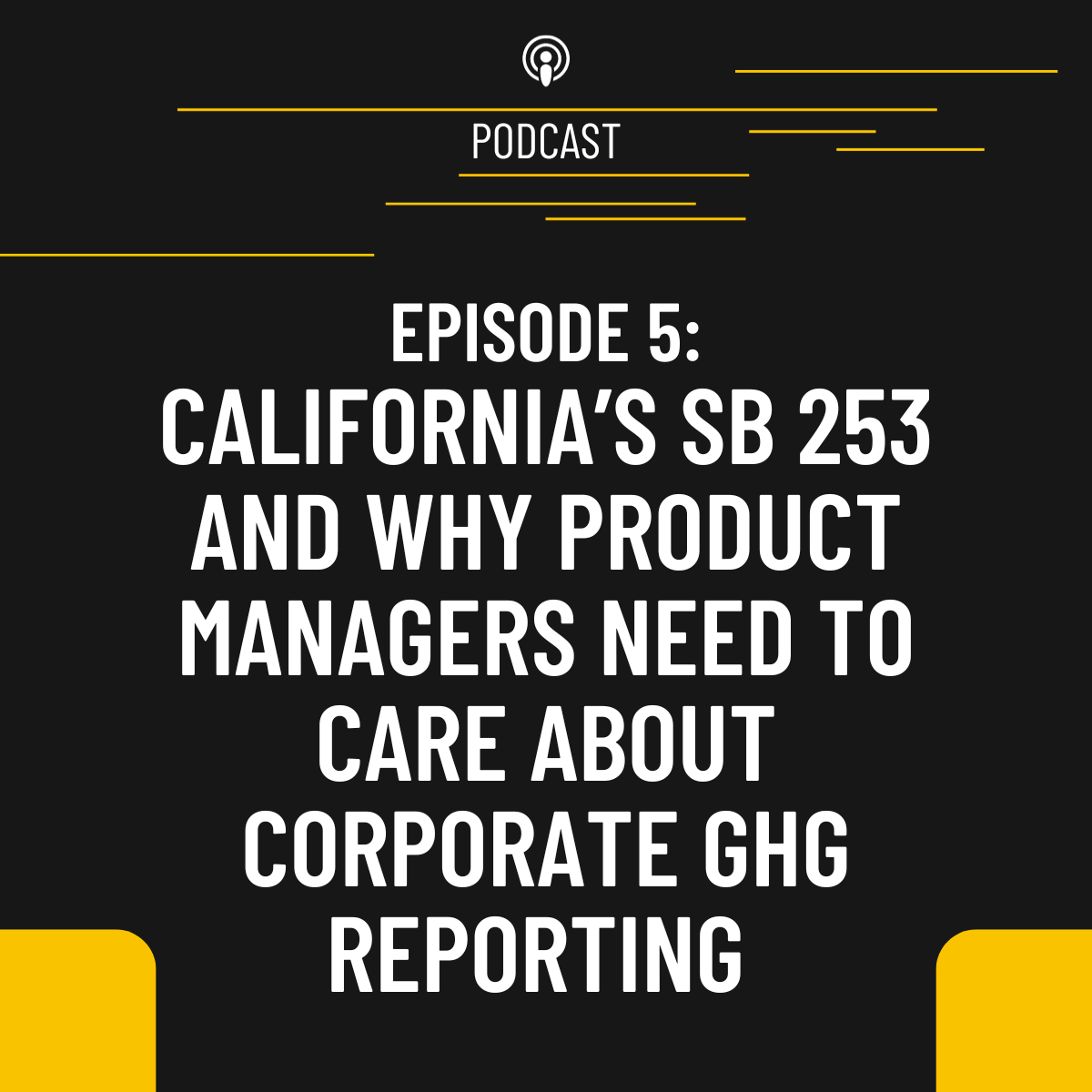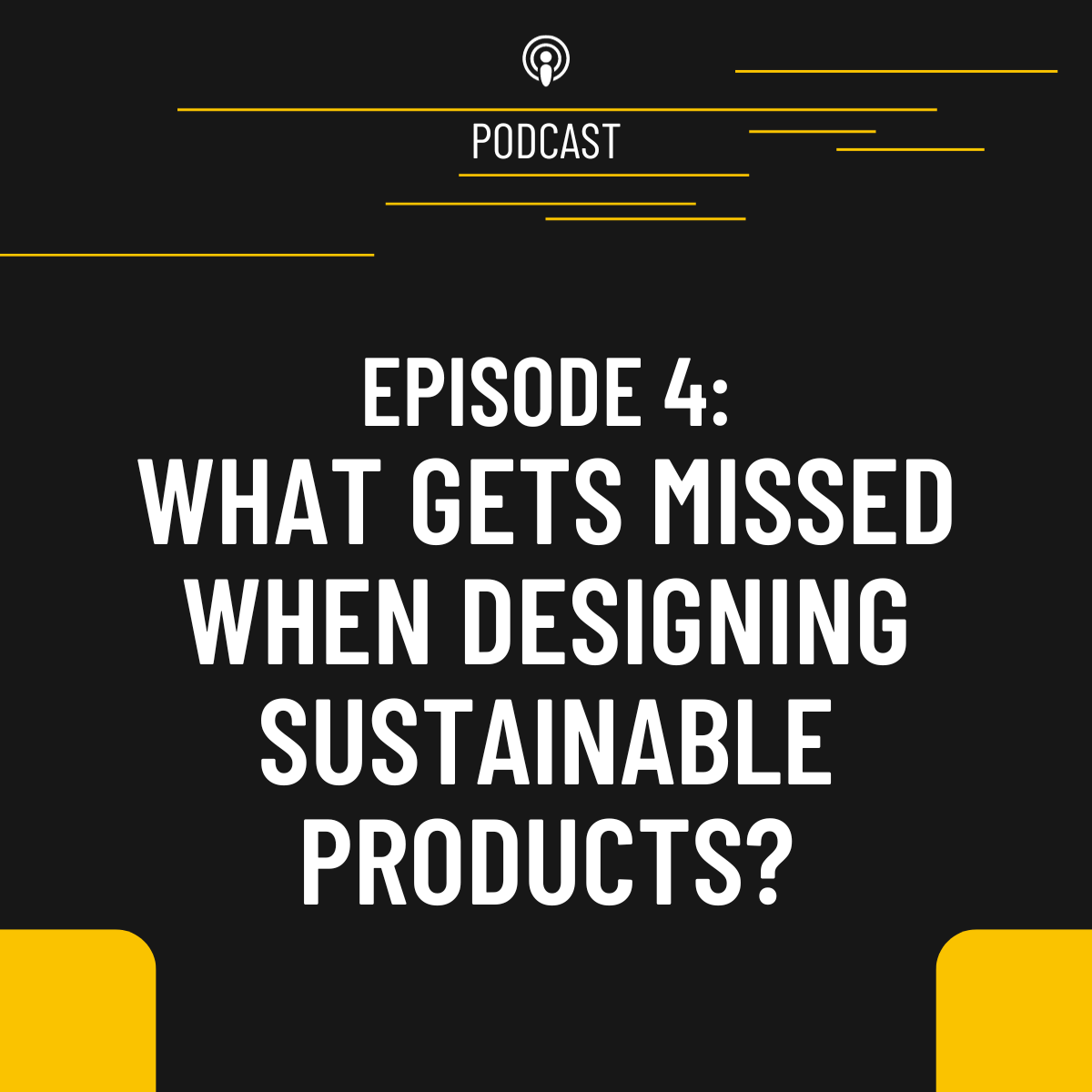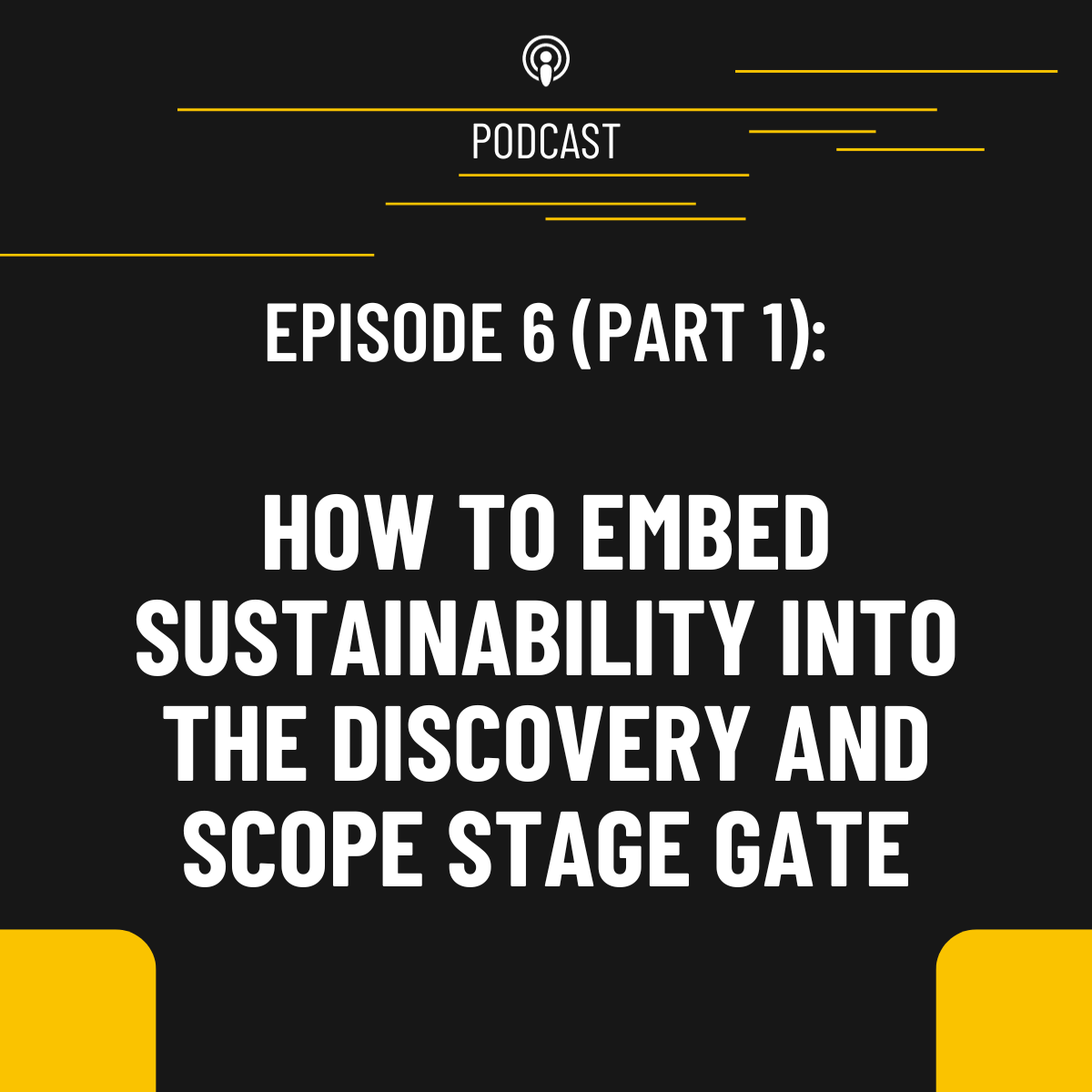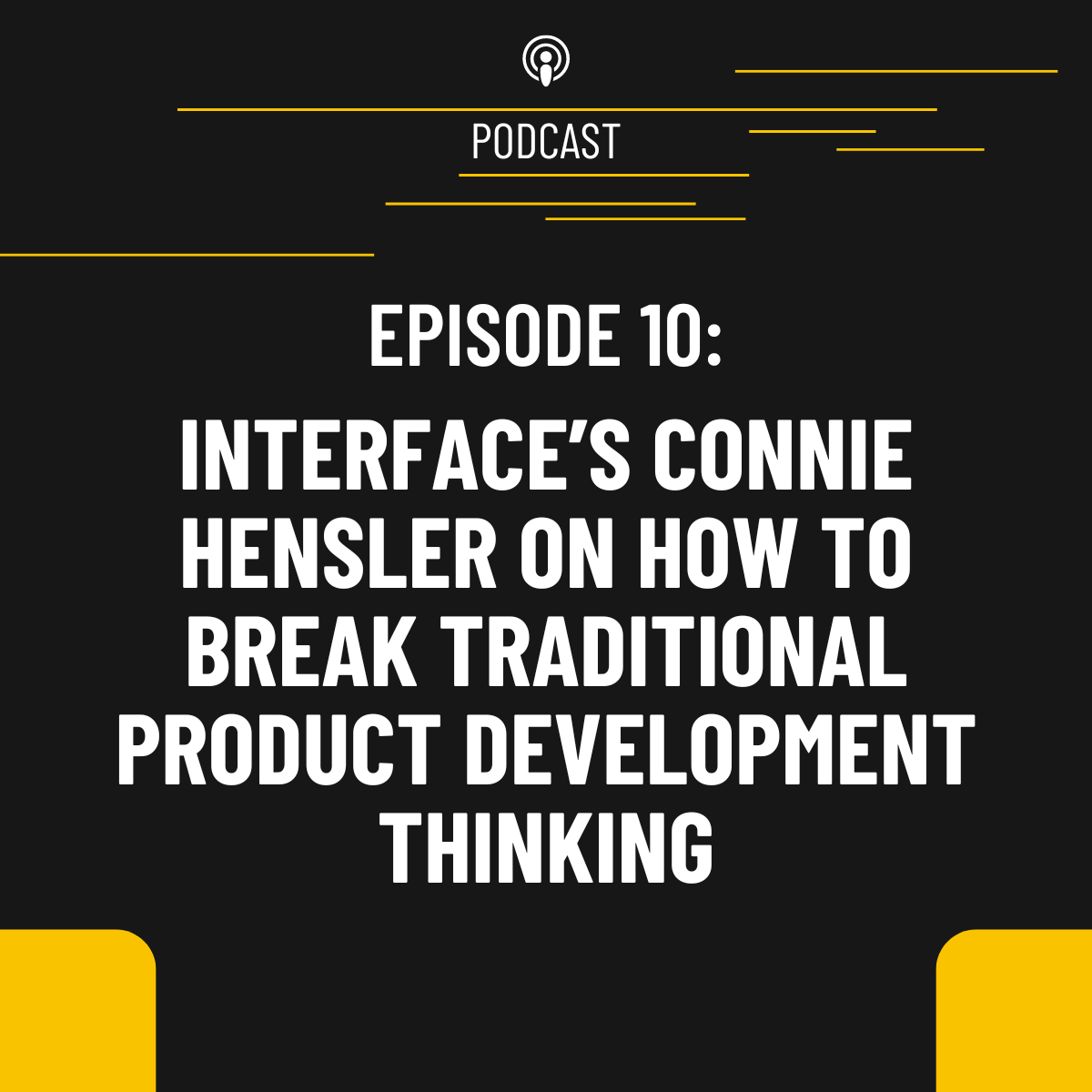Show Notes
Episode Notes
In October 2023 California’s Climate Corporate Data Accountability Act (SB 253), which directs the State Air Resources Board to develop regulations requiring corporations that do business in California, with annual revenues over $1 billion, to publicly disclose their GHG emissions, was signed into law.
In this episode, we discuss what this legislation means for product managers and individual products. Are we going to start to see product-level impacts become enterprise-level reporting? And what steps can product managers take to align product-level impacts and reporting to corporate goals?
Listen to find out more.
In This Episode
In a moment we're going to look at California's new Climate Corporate Data Accountability Act which includes scope 3 greenhouse gas reporting starting in 2027. But first, I want to explore the difference between corporate level reporting and the environmental impact reduction and reporting that happens at the product level. [00:05]
- Neil: A good frame to do this is the what, the who and the why. And if you look at how companies take raw materials, create products and sell it, there's many standards and different aspects you need to report on that are covered by the Sustainable Development Goals. You have standards like the GRI and SASB and so on that are out there that help create the construct on how to report on the operations of business. [00:51]
- To understand who's the audience for these kinds of reports, it is typically governments where you're reporting into a kind of platform when it's regulated. Investors that look at these reports when you're looking at investor reports or sustainability reports and NGOs take particular interest in too. Customers, indirectly, through the brand that you create and how you position yourself as a company in terms of being sustainable. [01:25]
- The reason why companies do this is it provides a platform to operate. Sometimes - it is around regulations - if you did not report you would not be able to operate in that particular jurisdiction. It’s a way to control how businesses operate in a jurisdiction. [02:05]
- On the product side of things though, it becomes very direct. If you look at what a company is, it is about making products and making them better than competition and selling them for a price that customers will buy. And in this case a product level declaration from a sustainability perspective addresses that product and how it can be positioned against competition in a better way. [02:25]
- If you're looking at who's the customer, there isn't any regulation to date that covers product regulations. I think there are some. When you're looking at the digital product passport in Europe, the recycle content in packaging in several places in the US. But there's nothing broad that operates at the scale that you typically see corporate reporting standards and regulations. They are very dedicated to customers. They're creating a differentiation against competition so that customers choose your product as opposed to others. Therefore reporting in terms of EPDs or lifecycle assessments or ecolabels are a key differentiator there. [02:46]
- I think it is important to keep in mind that for the vast part, product managers have never had to worry about corporate level reporting because this is something that sustainability teams and investor relations teams take care of. Whereas a product manager needs to care about product level reporting, because typically this comes out of their budgets and their accountability. [03:34]
Jim, do you have anything to add to that? [03:58]
- Jim: I think there are different purposes. The purpose of corporate reporting is really to look at the overall carbon footprint or broader perspective to comply with regulations or stakeholder brands. There is a lot of interest in the investment community now in some of that. [04:01]
- But when you get into the actual individual product, you're dealing with collecting early information, in this case greenhouse gases on the entire product footprint from raw materials, acquisition through use and some kind of end-of-life management. So, there is an entirely different focus between the two activities which as Neil said, is not really tied back to a reporting requirement. But it is tied back to customer and consumer expectations in terms of what are they looking for in the products they buy based on a reduced carbon footprint. [04:18]
- There are differences. Both are important. And as things evolve, we're going to see them come closer and closer together, where the product manager and the activities in the innovation and stage gate process are going to have a greater role to play in helping the company at the enterprise level meet their corporate greenhouse gas reduction targets. [04:48]
- The product component and the product manager's role are pivotal to help the company meet their greenhouse gas reduction targets in some of these requirements that we're seeing but also lay the foundation for improving the overall performance of the company. So that's what I see between the product and the enterprise level. [05:32]
- Neil: To add to that, traditionally scope reporting has been about the operations, and if you look at GHG, there's a GHG protocol that breaks this down into scope 1 and 2. So, scope 1 is things that you burn gas on in a CHP to produce electricity and heat. Scope 2 is you're using electricity to make something. So, you're buying energy from someone else who does that burning of fuel for you. And then there is scope 3, which is all the materials that you buy; the non-energy related stuff you're buying like steel, copper, plastics. [05:52]
- This is where scope 3 comes in and where product and corporate start meeting is this realm of scope 3 because your scope 3 impacts are primarily determined by the products that you make. And this is where you see the bridge coming back between product and corporate. [06:36]
- Jim: Scope 3 has both upstream and downstream, but the upstream is your suppliers. When a product manager and the product manager's team lay out a new footprint for a product, they're going to have to pick materials and then suppliers. So now procurement is going play a key role in helping the company understand their whole greenhouse gas emissions on scope 3. But even more importantly from the product level is that product goals are going to be based cradle-to-cradle, cradle-to-grave lifecycles. [06:54]
- Neil: And even if you didn't care so much about the materials that you're using, scope 3 has got 15 categories and one of them is largely driven by your products and how they're used in the world. If you're oil and gas producer, there's no real impact in extracting oil from the ground because the major impact actually comes from burning that. And now scope 3 plays into that because you need to now report on it. And this is where product managers and their role in creating products that are more energy efficient and have lower impacts also becomes public information through scope 3 reporting at the corporate level. [07:35]
Let's look at this in the lens of the new legislation that California just passed. In October of this year, California introduced the Climate Corporate Data Accountability Act, essentially requiring businesses with over revenue of 1 billion to report their greenhouse gas emissions, starting with scope 1 and 2 emissions in 2026 and adding scope 3 emissions in 2027. What is the relevance of this legislation for product managers and individual products? [08:18]
- Jim: The significance is that now you've got a requirement in the state of California that says to do business in my state, you have to report and meet these requirements. And I think that's impactful. But people have always said when we work internationally in Europe or in other places around the world or even in other states, is the influence California has had in laying the foundation or setting the stage for environmental or sustainability directions by these other states or countries. They've never adopted California's rules by any means. But what California does sets a vision and leadership perspective. It has an impact in leading as an example, as a benchmark for other countries to look at to tighten their own environmental or emissions rules. So, with greenhouse gas emissions reporting now coming out of California, I think other countries are going to see that and certainly other states are going to see that, and maybe we call it the California effect - it is going to have a major impact across the US and across the world. [08:44]
- Neil: It's not to be underestimated what 5000 companies mean. That's a significant portion of the most powerful companies that operate from outside the world but operate in California. And so whether the rest of the world follows or not, or the rest of the states follow or not, it doesn't matter. The fact is they will have to comply with these regulations if they do enough business in California. [10:28]
- But I think it's important to keep in mind why this is so serious. There have been scope 1 and 2 regulations that have been in place. The European Carbon Trading System, the ETS system has been in place for more than a decade now. This focused on scope 1 and 2 emissions from factories. But in the US, for the first time, you have to start reporting in 2027, but based on 2025 data for scope 3 data. [11:00]
- What you also need to keep in mind is that this needs to be verified by a third party. This is not something you can write yourself and publish, like what companies have done in the past when it has been voluntary. This is public information that you will put into an online website that people can search and compare against your competition and against others in the industry. [11:38]
- Why this is so serious is it takes 24 months to set something like this up for a large company. I've done this for the last 15 years and it's not trivial to set up a reporting system for scope 1, 2 and 3 for a large organization. And it's a 500K fine for misreporting and while that doesn't seem like a lot of money, this goes on your public profile. [12:16]
- The same thing is going to happen just like what the SEC did for financial reporting in the 1930s, where the whole world now moves around, and our business plans are catered to the report that goes public. [12:55]
- It is important for product managers to care because they control the lifecycle of their product that is then translated into the scope 3 report of the company. So, for the first time in history, I would say a product manager now needs to start caring about what's happening in the corporate report. And I think for the first time, people will start looking at the product manager to say, hey, what's happening here? And how do you make this better? Because we see how the others are doing too, in competition. [13:45]
- This is this principle I like to get people to think about. If you were to live in a house made of glass, you behave very differently in what you do and how you react. And that's what this regulation is doing for product managers and for companies. They're putting everyone into this glass house. [14:14]
What steps can product manager take to anticipate this growing focus on scope 3 emissions and how they need to care or align with corporate reporting that we're seeing here? [14:39]
- Neil: I think scope 1 and 2 will be covered by sustainability teams, investor relations teams within companies. I think the GHG protocol started with a scope 1 and 2 standard in 2001, so almost 22 years now. I would say there is not a lot of chaos that will ensue from this for scope 1 and 2. [14:54]
- But in terms of scope 3, this is relatively new. The standard was released in 2001 and not a lot of companies have done this well because there's a lot of flexibility that is provided and there's a cascade according to the level of granularity that you need to use to be able to create an adequate scope 3 report. The first is you need to know exactly what the product is and what the supply chain is and it's called activity-based modeling. So knowing what is happening in the supply chain or in the value chain of your products that you're selling. The second is if you don't have this information, for example, you don't have data from suppliers about the environmental impacts of the products that you're buying, then you could use average data. And then when you don't have data for this, even when there is no database that allows you to estimate what the impact of a particular raw material is, that's when you can use a spend based approach. As you imagine things become fuzzier and less useful as you go down this hierarchy. As a product manager, your only lever for change is if you understand what's really going on in the supply chain. [15:15]
- Product managers will not just have to look downstream of their product, but also upstream and mapping out this supply chain and understanding how their products react downstream. The use-stage of a product is going to be key for them to improve. I think average data as well as spend-based data do not help product managers change anything. The only thing you can do is buy less and sell less, which nobody wants to do. [16:47]
- Jim: When I first got involved in the lifecycle field years ago, there was some initial work that demonstrated that during the product design and development stages, traditionally when decisions are made (the materials selected and where they get the materials) created and addressed 80% of the product's total lifecycle cost or impact. [17:23]
- As Neil said, scope 1 and scope 2 are primarily related to manufacturing and operations. They found that 80% of the time, management efforts were spent in manufacturing and operations, which only represented 20% of the value creation/impacts. 80% of the opportunities is upstream where you can look at all the suppliers, materials, and where they come from and then the downstream aspect of it. [17:55]
- That's why I've been focusing on the stage gate process, product design and product sustainability, as opposed to corporate sustainability because it's at the product manager level, it's at the design and development level that the company can identify where the hotspots are, both upstream and downstream. [18:40]
- In terms of driving corporate sustainability targets or greenhouse gas targets, you need to know what each product lifecycle greenhouse gas footprint is; and that can be rolled up to be able to meet corporate greenhouse gas goals. The product lifecycle related to greenhouse gas measurement and reduction is going to drive the ability of a company to meet the corporate goals they have. [19:11]
- Product goals are going to be a major enabler to help the company conform to their total greenhouse gas corporate goals. And the product manager is going to serve as an enabler to manage changes throughout the stage gate process to reduce greenhouse gases. They are going to provide 80% of the data that are required based on the product impacts both upstream and downstream. [19:50]
- Going forward, I see the product manager having a pivotal role to ensure the company can meet the overall and individual greenhouse gas goals to create a competitive advantage. It's an opportunity for companies who are leaders and for others to get on board and become more proactive in the sustainability and greenhouse gas field. [20:25]
Links to things we talk about:
- EU Emissions Trading System (https://climate.ec.europa.eu/eu-action/eu-emissions-trading-system-eu-ets_en)
Who’s talking?:
To read about who you're listening to, visit fivelifestofifty.com and click on our bios.
We want to hear from you:
Is there a topic we didn’t discuss enough, or you think we missed entirely?
Do you have a story about how you are using what you heard?
Is there a question you would like answered?
We want to know!
Write to us at [email protected].








